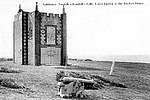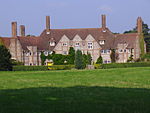Salthouse

Salthouse is a village and a civil parish in the English county of Norfolk. It is situated on the salt marshes of North Norfolk. It is 3.8 miles (6.1 km) north of Holt, 5.4 miles (8.7 km) west of Sheringham and 26.3 miles (42.3 km) north of Norwich. The village is on the A149 coast road between King's Lynn and Great Yarmouth. The nearest railway station is at Sheringham for the Bittern Line which runs between Sheringham, Cromer and Norwich. The nearest airport is Norwich International Airport. The landscape around Salthouse lies within the Norfolk Coast AONB (Area of Outstanding Natural Beauty) and the North Norfolk Heritage Coast. The civil parish has an area of 6.22 km2 (2.40 sq mi) and in 2001 had a population of 196 in 88 households, the population increasing to 201 at the 2011 Census. For the purposes of local government, the parish falls within the district of North Norfolk. Changes in governmental policy have discontinued management of coastal erosion in North Norfolk.The Parish Church of St Nicholas is a Grade I listed building; it was rebuilt by Sir Henry Heydon (died 1504). From 2001 to 2011 the church in Salthouse was the setting for an annual month-long contemporary art exhibition by artists with a Norfolk connection. The exhibition was organised by the North Norfolk Exhibition Project (NNEP). The curator of Salthouse 09 was Simon Martin from Pallant House Gallery in Chichester, on a theme of 'Salt of the Earth.' The exhibition ran from 2 July to 2 August 2009 and included ceramics, film, installation, painting, printmaking and sculpture. The 50 artists in the exhibition included Maggi Hambling, Gary Breeze, Kabir Hussain, Colin Self, Margaret Mellis and Ana Maria Pacheco and the potters Ruthanne Tudball and Stephen Parry. The Salthouse Sculpture Trail features a number of local artist's sculptures over approximately ten miles, linking Salthouse Church and Heath, Holt town, Holt Country Park, Kelling Heath Holiday Park and Kelling Heath.
Excerpt from the Wikipedia article Salthouse (License: CC BY-SA 3.0, Authors, Images).Salthouse
Cross Street, North Norfolk Salthouse
Geographical coordinates (GPS) Address Nearby Places Show on map
Geographical coordinates (GPS)
| Latitude | Longitude |
|---|---|
| N 52.95 ° | E 1.09 ° |
Address
Salthouse Village Hall
Cross Street
NR25 7XH North Norfolk, Salthouse
England, United Kingdom
Open on Google Maps










